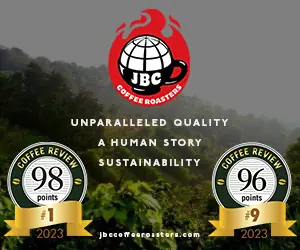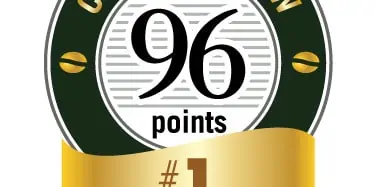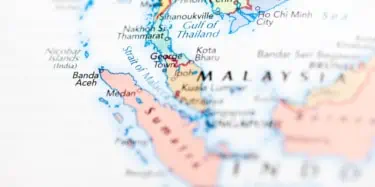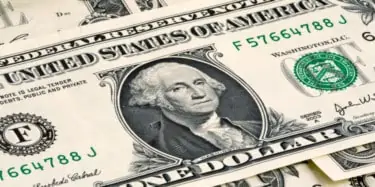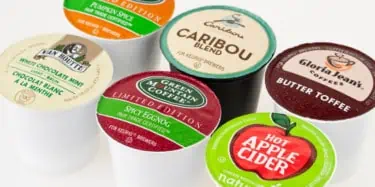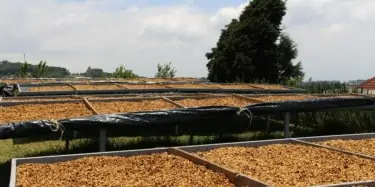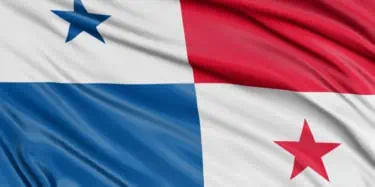Some interesting green coffees have come into the lab recently. These were green samples, but you can probably find roasters who offer them via an Internet search. Those who have some history probably are aware that St. Helena, a tiny island located in the middle of the South Atlantic roughly between Brazil and Africa, is famous as the final exile place of Napoleon I (and also, in travel
What Does a 96-Point Coffee Taste Like?
What does a 96-point coffee taste like? Well, you can find out for yourself. Three coffees in 2013 have received ratings of 96 points... and at least two of them are still available from the roasters. Our blind assessments of these remarkable coffees appear below. La Esmeralda Mario Carnaval 2012 Panama by George Howell Coffee/Terroir Coffee "Delicate but lush; piercingly sweet. Honey,
Top-Rated Espressos from the First Half of 2013
As we approach the mid-way point of 2013, we decided to take a look back at the top espressos from the first half of the year. Six espressos earned 94 points, the highest score for an espresso so far in 2013. Three of these coffees are from U.S. roasters: Thirty-Thirty Coffee Co. by Momma Bear Espresso, $17.00/12 ounces. Tchembe Single Origin Espresso by Barrington Coffee Roasters,
Are Espressos A Bargain?
Coffee Review evaluates and rates coffees that are intended for both espresso and non-espresso brewing. We are agnostic on brewing method from the point of view of rating a coffee. So, it's reassuring to see that the average posted score for espressos (92.10) by American roasters in the first half of 2013 is nearly identical to that for non-espressos (92.14). However, the average price of
Better and Better: Sumatras 2013
Sumatra coffees continue to amaze. Aside from Ethiopia, I can think of no other origin currently producing fine coffees displaying as much sheer range and distinction of sensory association. But whereas Ethiopia’s range of sensory surprise is owing to a rich store of ancient plant varieties, Sumatra’s range and diversity of sensation is primarily achieved through what would seem to be some simple
Some 2013 Best Value Coffees Still Available
Highly rated coffees that are also affordable sell quickly. We did a little checking around for you.... Some of this year's best value 90+ rated coffees are still available: Johnson Brothers - Ulos Batak Sumatra Peaberry - 95 points - $14.99/12 ounces - http://bit.ly/18D4gMC Lexington Coffee - Sumatra Mandheling Wahana - 94 points - $13.50/12 ounces - http://bit.ly/14ziJ8i Conscious
The High Price of Coffee in Taiwan
Yesterday, we noted that the average price of a 90+ point coffee from U.S. roasters in 2013 is $22.13 per pound. Count your blessings if you're a consumer in the United States. In 2013, we've reviewed 23 coffees rated 90+ from Taiwan. The average score was nearly identical to the U.S. average: 92.0 vs. 92.1 for the U.S. However, there was a dramatic price difference. The average price per
What You’ll Pay for a 90-Point Coffee
At Coffee Review, we cup coffees on a blind basis. To be completely objective, we hide the identity of the roasters and coffees until after scores are determined and tasting notes are completed. When we cup, we don't know the price of the coffee either. It's irrelevant from a cupping point of view. However, it's not irrelevant to consumers. In fact, for most people, the price of a coffee
Promising Sumatras
Due to Kenneth David's rugged travel schedule over the past several weeks, the June issue of Coffee Review, which features coffees from Sumatra, is behind schedule. We expect to post the article and reviews within the week. Sorry for the delay. Reports from the Coffee Review lab on the samples we've received are very positive. We've received some truly exceptional Sumatras. It wouldn't be
Lighter and Brighter: Single-Origin Espressos
Coffees from a single farm or cooperative roasted for espresso preparation – aka “single-origin” or simply “SO” espressos – are now a familiar presence on high-end coffee menus and counters in North America, and in many East Asian countries as well. But it was not so long ago that the argument ran that a single coffee from a single origin would always be too limited in its sensory properties to
The (Not Quite Arrived) New World of K-Cups
Yesterday, according to the latest data from the National Coffee Association, thirteen percent of the U.S. population drank coffee made in a single-cup brewer. A significant portion of that thirteen percent undoubtedly used a Keurig brewer and its matching K-Cups to produce their single brewed cup. Keurig and K-Cups were the first single-cup drip-style system in the market and continue to dominate
The Andes Cup: Peru, Bolivia, Ecuador
For a couple of hours during the early preparation for this article I was haunted by the challenge to a coffee reviewer occasioned when it looks like perhaps a whole category of coffees produced by wonderful, hard-working indigenous farmers may turn out not to taste very good, meaning the reviewer might then have to face the quality-of-life vs. quality-of-coffee quandary head on. Which is
Three Trends at the Cusp of the New Year
As the New Year settles in I thought it might be worthwhile revisiting some interesting coffees recently reviewed outside the framework of our monthly review articles. All but one were reviewed in either December 2012 or January 2013, and all reflect in one way or another ongoing trends at the top end of the specialty coffee business. Kenya Endures Or more than endures; continues producing
Readers’ Nominations: Trends and Successes
Over the years we have used our annual readers’ nominations story to attempt to find and celebrate regional roasting companies whose coffees we have never reviewed before. This year we ended reviewing six coffees from companies that have never appeared in Coffee Review, and five from companies that have. Overall, we tested forty-three coffees from twenty-five regional roasting companies. Once
Holiday Coffees: Solid to Spectacular
This month’s collection of thirteen holiday coffees splits neatly into two categories: special proprietary holiday blends – suavely comfortable and balanced in profile – and an assortment of distinctive single-origin coffees, very high-rated and quite spectacular in sensory profile (and in some cases rather spectacular in price as well). In all cases these are seasonal coffees that are here for
Big Box Value Coffees
The least expensive coffees by far to be had in the U.S. are offered by the two leading big-box retail chains, Walmart and Costco. For this month’s article we tested twenty-one samples purchased from our local Walmart and Costco outlets. The coffees we found at Costco were offered in largish bulk packaging ranging from two pounds up to five, with an emphasis on whole bean and 100% Arabica. Our
Cause Coffees
The specialty coffee movement has always attracted idealists of various kinds, from those obsessed with sensory perfection – the perfect espresso shot, the perfect cup – to those who simply are looking for stuff to sell in a way that will help the world. The two idealisms are usually entwined, of course, at least in publicity materials: Do good by drinking good coffee, the websites and packages
Honey and Pulped Natural Coffees
“Honey” is a relatively new term describing coffee that has been dried with all or some of the sticky fruit pulp or “honey” (miel in Spanish) still adhering to the bean. Those familiar with coffee processing methods will, of course, recognize this practice as a kind of compromise between two more familiar processing methods: the dry or “natural” method, in which the beans are dried while entirely
Not Your Same Old Panama Coffees
It’s a tribute to how much the specialty coffee world has changed over the last ten years that the style of coffee traditionally associated with Panama – clean, soft, balanced, gently fruit- and floral-toned – hardly showed up among the coffees nominated by roasters for this month’s article. True, Panama coffees of any kind very nearly didn’t show up, given the harvest was late and our article was
Coffees of Taiwan
Citizens of the economically dynamic little island nation of Taiwan have been seriously discovering coffee over the last decade or so, as have people in many other Asian countries. This month we decided to review some of the specialty coffee production of Taiwan to share just a little of the intense explorations of fine coffee going on all over Asia. Japan, of course, has a longer coffee history





